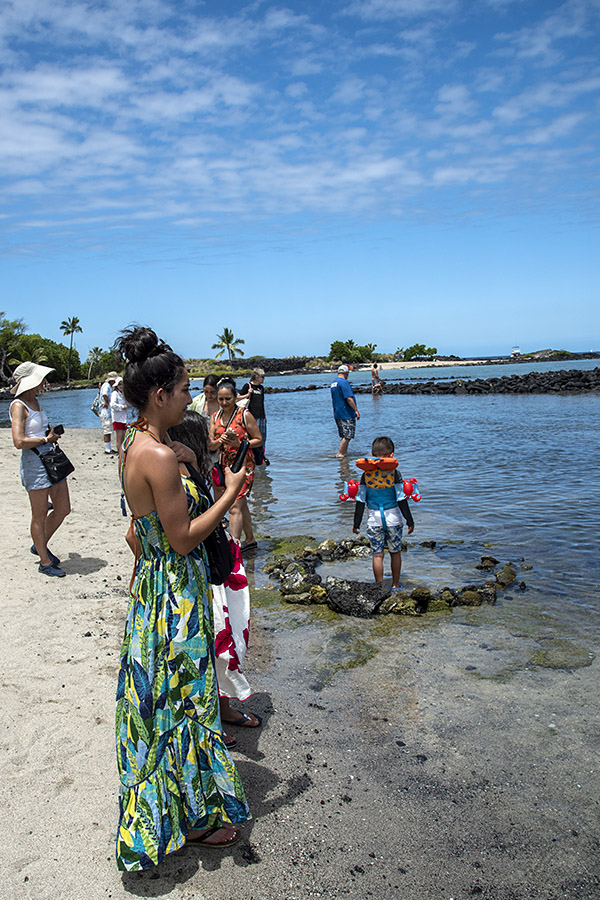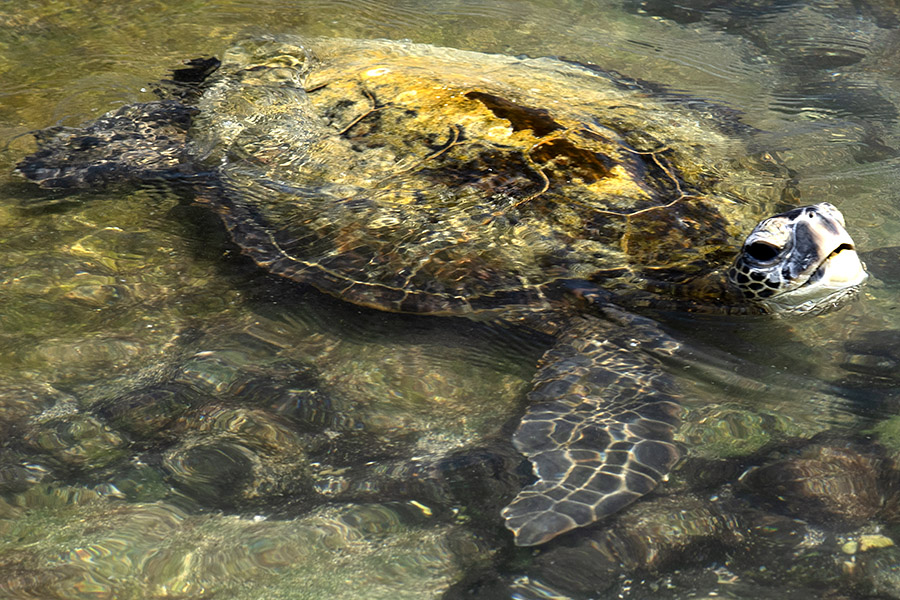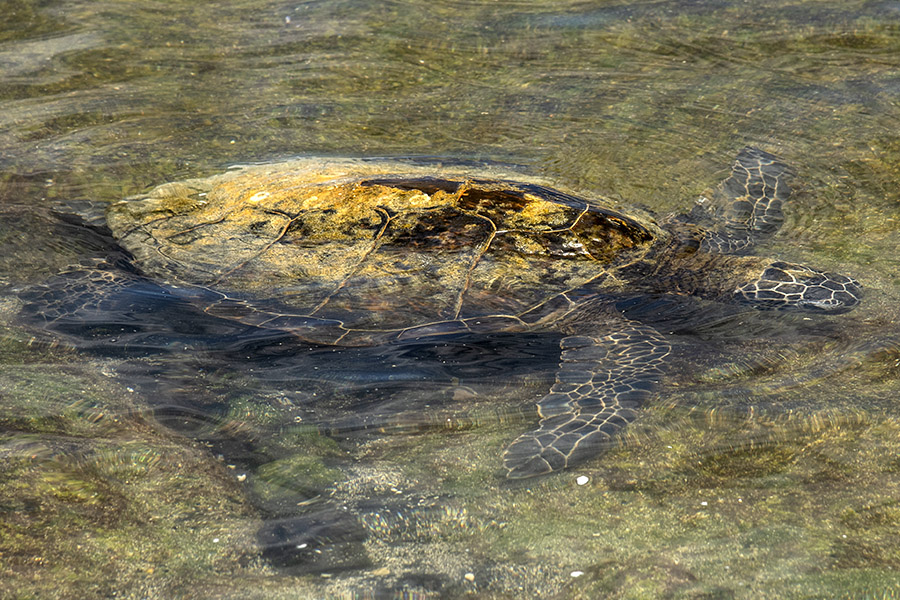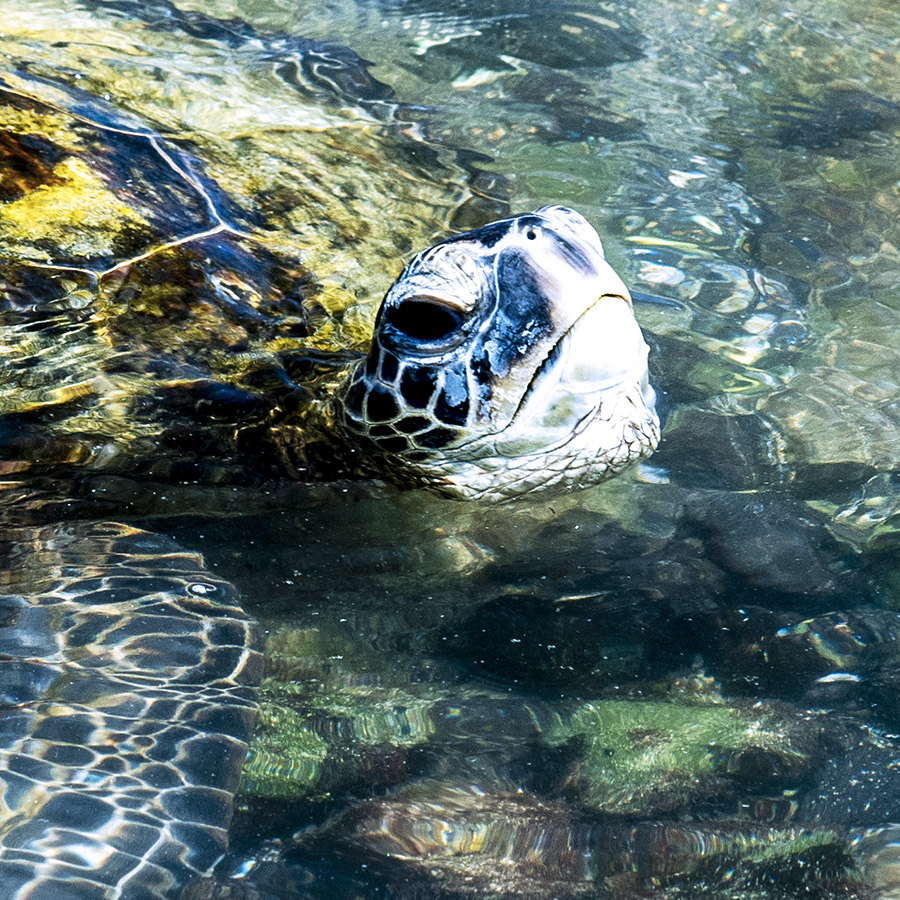Wow: Hawaii is just full of suprises. The adventure on this fine Hawaiian morning was another National Historical Park, lava fields, a rugged downhill (and then uphill) hike over a jagged lava path, sea turtles, and a rotting meat flower (no kidding!). A rotting meat flower? You bet. Read on and you’ll see.

We asked the Park Ranger at the entrance if we would be able to see the sea turtles, and he told us it all depended on what they were doing. “They might be sleeping, they might be out to sea, or they might be eating…you never know until you’re down there.”
Down there meant taking the 1.3-mile hike to the Pacific’s edge, which we proceeded to do. We were lucky; the turtles were out in force munching on the algae that grows on the rocks. They were huge…their shells were maybe three feet long. It was really something to see. There were seven or eight turtles in the shallows when we arrived.


On the return hike Sue noticed an unusually attractive and large flower in a ravine next to the lava path. I had the 24-120 lens on my Nikon and I didn’t want to attempt climbing down the jagged lava to get closer, so I zoomed in and grabbed this shot.

What struck me as unusual about the flower was its size, the fact that it seemed to be growing out of a cactus plant, and the flower’s markings and vibrance. I wasn’t sure how to start researching a flower from a photo, but while I was looking at the photo Google popped up a Wikipedia link. The Wikipedia page had a photo, too, and no doubt about it, it was my flower. Here’s what it said:
Stapelia is a genus of low-growing, spineless, stem succulent plants, predominantly from South Africa with a few from other parts of Africa. Several Asian and Latin American species were formerly included but they have all now been transferred to other genera. The flowers of certain species, most notably Stapelia gigantea, can reach 41 cm (16 inches) in diameter when fully open. Most Stapelia flowers are visibly hairy and generate the odor of rotten flesh when they bloom. The hairy, oddly textured and coloured appearance of many Stapelia flowers has been claimed to resemble that of rotting meat, and this, coupled with their odour, has earned the most commonly grown members of the genus Stapelia the common name of carrion flowers. A notable exception is the sweetly scented Stapelia flavopurpurea. Such odours serve to attract various specialist pollinators including, in the case of carrion-scented blooms, blow flies of the dipteran family Calliphoridae. They frequently lay eggs around the coronae of Stapelia flowers, convinced by the plants’ deception.
I had heard of such flowers and I always wanted to see one. For me this was a first. I know what you are thinking, and no, I didn’t get close enough to take a whiff. Maybe next time.
Here’s the same flyer I showed in a previous post from Hawii. We weren’t on motorcycles on this trip, but rentals are available and I thought the pricing was reasonable.


Never miss an ExNotes blog:
Want to help? Hit those popup ads, please!

